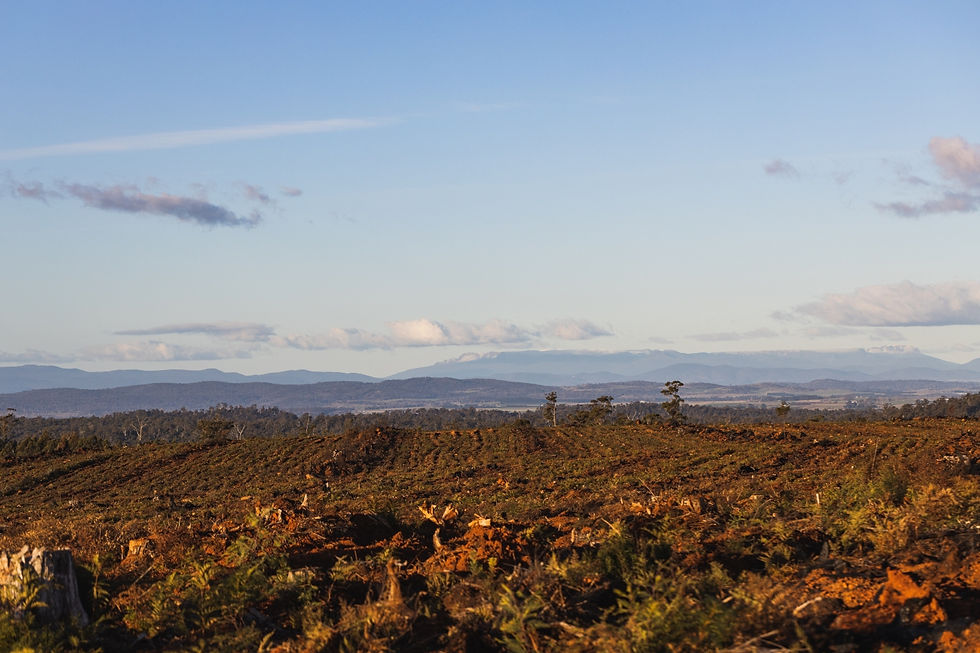ABx Group secures extension of high-grade Portrush discovery
- Doug Bright

- Sep 26, 2023
- 3 min read

ABx Group has strengthened its grip on a significant area of Tasmanian rare earths potential with the granting of two new exploration licences (EL) covering 483 square kilometres for an initial five-year term, extending its recent Portrush discovery.
The company says it pursued the two new ELs in a bid to secure the southerly extensions of its Portrush prospect, which is less than 10km south-east of Launceston and 52km east of its Deep Leads rare earths deposit.
At Portrush, results revealed last year include 581 parts per million neodymium and a resounding 4800ppm total rare earth oxides (TREO) in a 1m intercept from just 11m. ABx says it hopes to be able to apply to the new ground all the knowledge and understanding it has gained from its adjacent Deep Leads, Rubble Mound and Wind Break prospects, where it has already sketched in a rough outline around an extensive new rare earths target area.
The company has also applied for a third EL to capture an intervening 16km extension from Deep Leads-Rubble Mound to its Wind Break discovery area, which will expand the rare earths target area from 35 sq km to more than 100sq km. The application is still awaiting grant approval.
ABx Group managing director and chief executive officer Mark Cooksey said: “We’ve wanted to secure these two exploration areas ever since we obtained our highest rare earths grade of 4812 ppm total rare earth oxides in hole PR033 at our Portrush discovery. These two large exploration licences significantly increase our rare earths exploration footprint in Tasmania to almost 600sq km, and I look forward to getting on the ground and kicking off our exploration program to locate more ionic adsorption clay rare earth deposits.”
The company says it will initially undertake exploration in the two new tenements to target prospective areas using the knowledge it has gained at the Deep Leads-Rubble Mound project and re-assay bottom-of-hole samples from the Portrush licence. It anticipates then deploying reverse-circulation (RC) drilling to test for ionic adsorption clay (IAC) rare earths deposits and may use push-core drilling.
That method is used in soft ground such as clays and soil where no obstructions are expected, for reasons of economy and speed, to avoid sample disturbance and loss and to preserve sample material in the order in which it occurs naturally in the ground profile. Management says that the company may extend its drilling programs at the tenements, subject to assay results.
ABx seems to be on a roll with its IAC targets and it will be interesting to see how a good, regular drilling pattern with a light mobile push-core rig can scamper quickly across the soft, near-surface targets. It could prove to be like a sewing machine stitching together a good rare earths story, especially if it can embroider its resource maps with a few more of the high-grade values seen at prospects such as Portrush.
It will be interesting also to see how the true IAC targets stack up against the possibly more common, clay-hosted colloidal rare earths targets that are coming to light around the country.
Australian clay-hosted rare earth deposits discovered to date appear to have most of the mineralisation contained in colloidal form rather in the ionic form, so it is becoming common to employ the term “clay-hosted rare earths” instead of “ionic” to avoid any confusion.
The metallurgy differences between the two types can be stark and processing methods and recoveries can vary accordingly. But it is likely inevitable that the new clay-hosted rare earths deposits coming to light will evolve into their own place in mineral processing chain chemistry and with their own operating costs.
Is your ASX-listed company doing something interesting? Contact: office@bullsnbears.com.au


